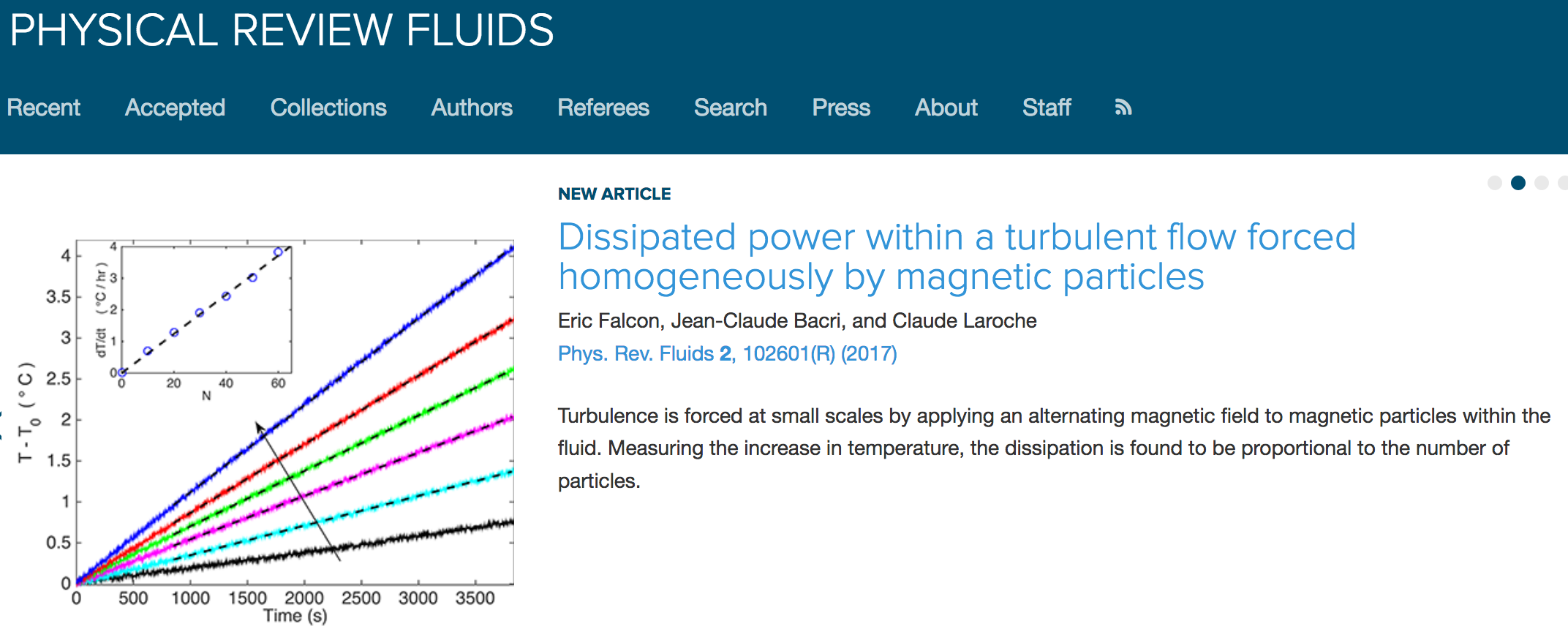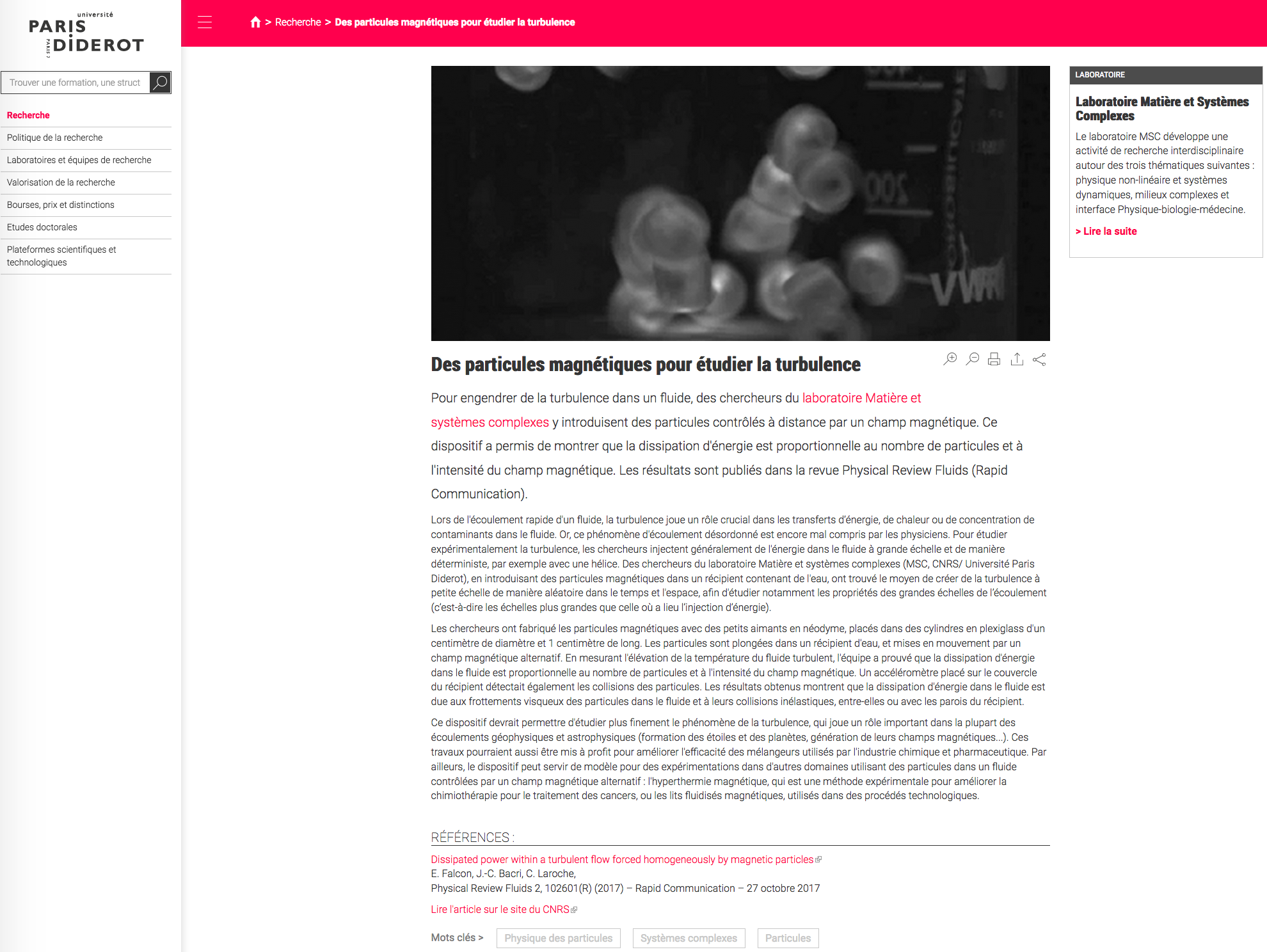 CNRS Research News "Des
particules magnétiques pour étudier la turbulence",
13 Nov. 2017 ;
CNRS Research News "Des
particules magnétiques pour étudier la turbulence",
13 Nov. 2017 ; Abstract:
We report measurements of
global dissipated power within a turbulent flow homogeneously
forced at small scale by a new forcing technique. The forcing is
random in both time and space within the fluid by using magnetic
particles in an alternating magnetic field. By measuring the
growth rate of the fluid temperature, we show how the dissipated
power is governed by the external control parameters (magnetic
field, and number N of particles). We experimentally
found that the mean dissipated power scales linearly with these
parameters, as expected from the magnetic injected power
scalings. These experimental results are well described by
simple scaling arguments showing that the main origins of the
energy dissipation are due to viscous turbulent friction of
particles within the fluid and to the inelasticity of
collisions. Finally, by measuring the particle collision
statistics, we also show that the particle velocity is
independent of N, and is only fixed by the magnetic
``thermostat''.
 CNRS Research News "Des
particules magnétiques pour étudier la turbulence",
13 Nov. 2017 ; Tweeter_@INSIS_CNRS
13 Nov. 2017
CNRS Research News "Des
particules magnétiques pour étudier la turbulence",
13 Nov. 2017 ; Tweeter_@INSIS_CNRS
13 Nov. 2017 in
Lettre "En direct des
labos" 14 Nov. 2017
in
Lettre "En direct des
labos" 14 Nov. 2017 Web
site Université de Paris, 14 nov. 2017; Web
site of MSC laboratory, 14 nov. 2017
Web
site Université de Paris, 14 nov. 2017; Web
site of MSC laboratory, 14 nov. 2017 |
 |

 |
 |